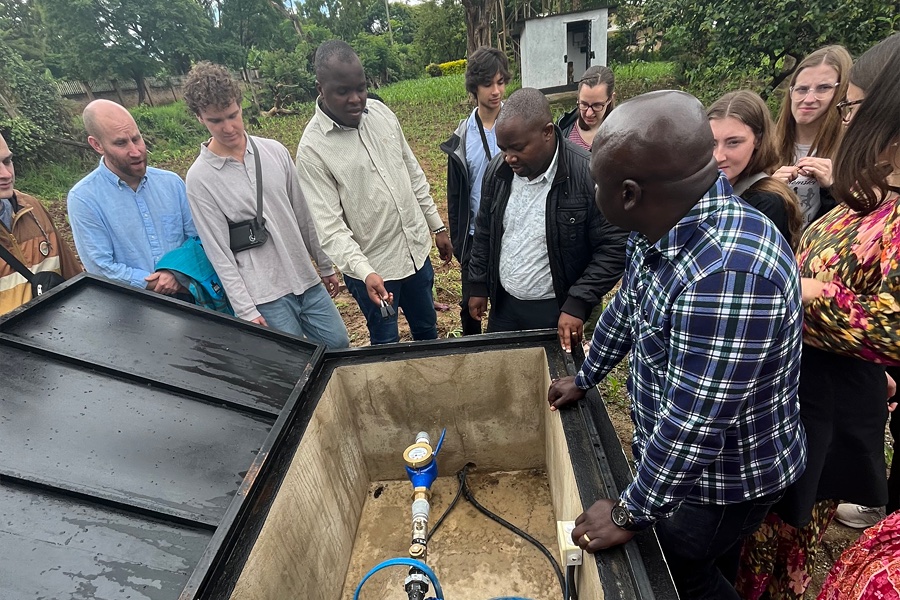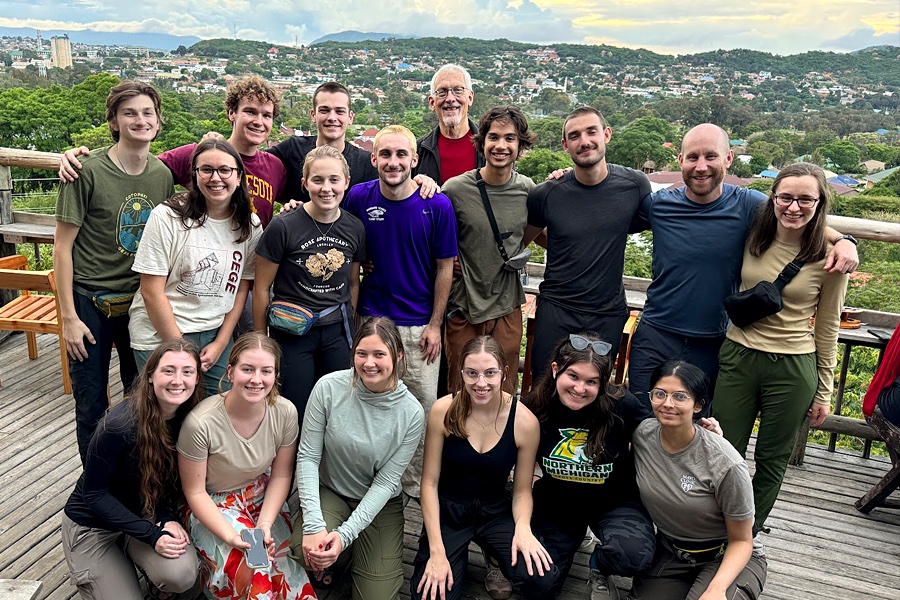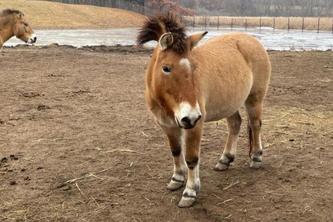
As John Lennon sang, “We all want to change the world.” Today, through the Global Seminars program, U of M engineering students set foot on a path to realizing that dream.
For two weeks starting in late December, a group of students from the College of Science and Engineering visited Tanzania to perform research on a growing global crisis: the coming scarcity of clean water supplies. They formed three groups; each chose a village and designed a potential water system for it.
Besides an on-the-ground look at what water engineers do, the students got a taste of what it’s like to work abroad on projects with real-world impact.
The visit was one in a series by CSE students and professors to world sites. As with previous trips, they published a blog—and lots of photos—describing their work, the hospitality they received, and the sheer excitement of the experience.
Below are some edited excerpts from the blog. Following them is a link to the complete blog and those from trips to other countries.
Day 1: We went to the Mwenge Market. Items varying from paintings, earrings, and jerseys. This was the first significant culture shock for the group, as the prices for these items were entirely dependent on a bartering system. While some managed to negotiate a better price, some failed entirely.
Day 3: In our village teams, we determined the best pipe diameter, maximum pipe pressure, tank capacity, and pump power for the individual system. This was definitely an intense day of brain usage.
Day 4: As the sky darkened, the group shared laughs and stories over delicious, traditional Tanzanian food. Since at the beginning of the trip little was known about each other, it was rewarding to see how far we have all come together on this incredible journey. We finished the long day with a few rounds of Scattergories.
Day 6: We visited this village to see the borehole drilling site, which was being dug with a mud rotary drill. The intricacies of the drill were explained; this gave our group a good sense of what our project may turn into.
Days 7-9: The village water committee told us about a potential source that was roughly six kilometers away but at a higher elevation. We were not only hiking through mountains, but on occasion, we had to follow someone with a machete cutting through thick greenery.
Day 10: Each group began work on their respective water system solutions. We collected data in the villages on elevation, water source locations, and population size. Every group started by mapping out their villages within Google Earth and creating hand sketches. We created rough drafts of our presentations.
Day 11: We had a full house for our practice presentations with our peers, instructors, Saint Paul Partners, and a local water engineer in attendance. The presentations went well, with lots of feedback. Each group met with our professor to discuss what can be improved on.
Day 14: The gang just returned from Ruaha National Park today after a few days on Safari. We finished the night listening to the soothing sounds of impala bones being crunched and hyenas howling at the lions who had stolen their meal, which they had initially taken from a leopard. When it was time to leave, we begged them not to subject us to the dreaded "coaster" bus for our bumpy [12-hour] ride. However, as the photo proves, we survived to tell the tale.
Take a student-guided tour of Tanzania, access previous year's blogs
- Categories:
- Science and Technology
- Civil
- Water






